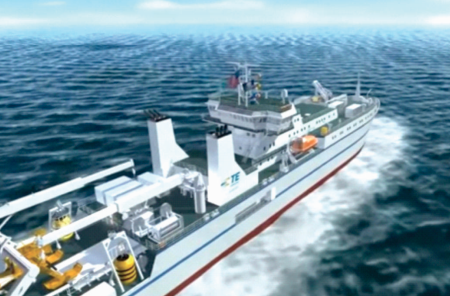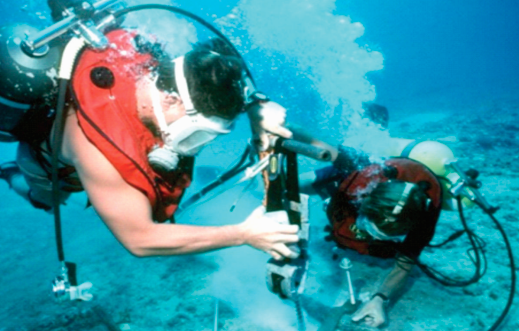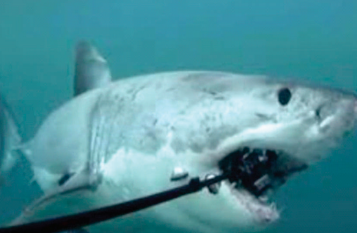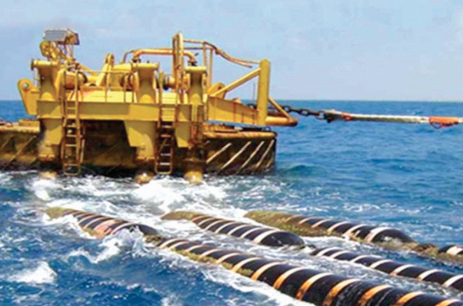
Pakistan needs huge resources for building on a robust, reliable, and efficient system which should be able to monitor, track, identify probable threats to undersea cables and take effective measures to check it.
Tahir Amin Choudhry
Succinctly, submarine cables or undersea cables or subsea cables are fiber optics deep in the ocean floor encapsulated in a protective shell and in this present age of communication data comprising of personal or commercial, voice or digital, civil or military, educational or recreational and financial transmissions travel via them. More than 95% of the world’s telecommunications traffic travels through about 438 transoceanic cables, which can vary from 17mm to 50 mm and totaling over 1.2 million Km in length which crisscrosses the ocean floors as a physical link between the masses. Undoubtedly, deep below the buxom of the oceans lie the arteries of modern society hidden away in the cold, dark depths of vast seas.

The Submarine Cable network of Pakistan provides instantaneous communication and consists of eleven international submarine cable systems. Pakistan telecommunication system comprises of PEACE, AAE-1, IMEWE, SRG 1, MENA, GBI, TW1, Orient Express, SEA-ME-WE-3, SEA-ME-WE-4 and SEA-ME-WE 5 and has two landing stations at Karachi & Gwadar. All eleven cable systems use Karachi landing station whereas the Orient Express & PEACE cable systems land at Gwadar as well making Pakistan more resilient in case of some cable failure or issue and more cable systems are under laying process.
Pakistan Telecommunication Authority (PTA) is responsible for telecommunication and submarine cable however, unfortunately PTA has failed to fully understand the full implications of its loss or importance.
The internet is responsible for financial transactions of the order of $10 trillion daily and is tightly intertwined with Pakistan’s interconnectivity with submarine cable to get its share. Even temporary damages to cables can have damaging corollaries and depends on how well Pakistan manages submarine cable operations, legislation, and implementation of the laws to safeguard or minimize the damage to the cables being recognized by the UN as “critical communications infrastructure.”
Submarine cables are vulnerable to a variety of threats from other commercial users such as an estimated 44.4% of faults are caused by fishing and another 14.6% of cable damage is resulted by anchoring or even from underwater earthquakes / other natural disasters.

Risk analysis indicates two concerns; either being tapped or destroyed – by either a non-state actor, as per some recent isolated incidents of piracy or, more likely, by a state adversary like India imposes the biggest threat exposure especially at the time of tension, conflict, or war. Our foe could also pursue several or all objectives like cutting military or government communications, eliminating internet access for a targeted population, sabotaging an economic competitor, or causing economic disruption for geopolitical purposes. India can achieve it through four survey ships and six nuclear propelled submarines which reportedly will be equipped with UUVs and in the process to develop undersea drones “Mathsya.”
Given the multi-faceted nature of the use, private ownership, and vulnerabilities of submarine cables, international action would necessarily need to leverage different formats to be effective.
Even though cables are privately managed, maintained, and secured. National authorities have a responsibility to ensure that cable routes are redundant and diverse enough to guarantee their overall resilience. Pakistan is in the great essence to put in order such procedures to safeguard our national marine, security, and communication interests. Unfortunately, neither the Pakistan Navy (PN) nor the Pakistan Maritime Security Agency (PMSA) is consulted for a pre-laying survey to protect the undersea marine assets. Presently, Pakistan Telecommunications Authority (PTA) has the control for laying of cables both on ocean and land but possess limited knowledge about maritime affairs.

Huge resources are required for building on a robust, reliable, and efficient system which once put in place should be able to monitor, track, identify probable threats to undersea cables and take effective measures to check it. Pakistan being a resource deficit country should develop Framework of Cooperation with Neighboring countries to pool in resource; Qatar, Oman, UAE and Saudi Arabia have invested huge in the submarine cables industry and be convinced for a shared assessment of vulnerabilities.
Pakistan, to first start with, to either acquire a second hand ship commission a new ship for cable operations. This would serve two purposes, firstly precious foreign exchange will be saved, secondly the threat of a foreign ship loitering in own Territorial waters and endangering national security will be eliminated.
Cable companies are always in a rush to repair the damaged cable to minimize the loss effect, the average cost of a single repair is in millions of dollars. Pakistan needs dramatic improvement in the authorization policy, reduction in its processing time and to adopt an E-smart solution for submission and analyzing the complaint throughout the day.

Under the guidelines of UNCLOS, Pakistan should introduce the concept of Cable Protection Zoning to protect submarine cable damages from certain activities such as fishing, anchoring, and dredging such as Canada, New Zealand and Australia has adopted an “integrated zoning management.”
During the “AMAN Exercise” naval forces participating in the event need to plan and execute in real time operation to detect and repair the fault and take other measures consistent with international law, including UNCLOS, to protect cables outside of national jurisdiction. Pakistan Navy & PMSA need to plan and execute maritime exercises and the development of common rules of engagement and procedures to deal with terrorist attacks on cables and theft of cables on a regular basis.
Pakistan needs to plan for rerouting the telecommunication traffic through other cables to minimize the duration of disruptions irrespective of the causes. Gwadar as a second landing station can be looped with other cable linking systems to bypass the impacted cable area through the collaboration with friendly telecommunication providers.
To ensure timely coordination and prompt processing of the cable repair applications Pakistan needs to appoint Pakistan Maritime Security Agency (PMSA) as a lead Agency to coordinate national policy and activities on submarine cables. Pakistan Maritime Security Agency (PMSA) officers possess necessary maritime knowledge hence PMSA to be given a mandate to coordinate a uniform policy on submarine cables under the guidelines of Pakistan Navy. Pakistan Navy should assess the national security implications of all potential sea cables landing on Pakistan waters and to ensure high security standards in case of conflict.
The efforts are needed to equip Pakistan National Shipping Corporation (PNSC) with specialized cable operations ships to eliminate the lengthy procedure for repairs approval and thus expediting the process. In Pakistan, if a cable is damaged or a threat to the cable system arises, PMSA needs to be given authority to address the situation, to initiate the process for repair and be called upon to respond. The process of institute pre pre-approval be adopted such as cable ship permits be issued and renewed annually, it is imperative that all such permits are in place prior to the time of a probable cable fault.
Pakistan does not have a policy or any regulations that protect submarine cables from damage by ship’s anchoring, dredging, fishing or other activities. UNCLOS recommends adopting laws and regulations to protect submarine cables within territorial waters, but Pakistan has failed to do so till today hence PTA needs to enact a legal framework for all processes of subsurface cable ops including but not limited to processing of applications, award of contracts, survey ship/crew security clearance, monitor survey of ocean floor, cable laying/repair, security of cables etc.
The Gulf countries have the capacity and ability to lay, repair the cables but the PTA needs to work and plan together to deal with emergency situations better and faster. Pakistan and its allies need to design a contingency plan to be ready and prepared for the consequences of submarine cable failure.
Finally, Pakistan should therefore promote a more comprehensive and holistic legal regime that would safeguard its submarine cable interests.

The writer is retired Naval officer and striving for the perseverance of the oceans for the prosperity of all.

